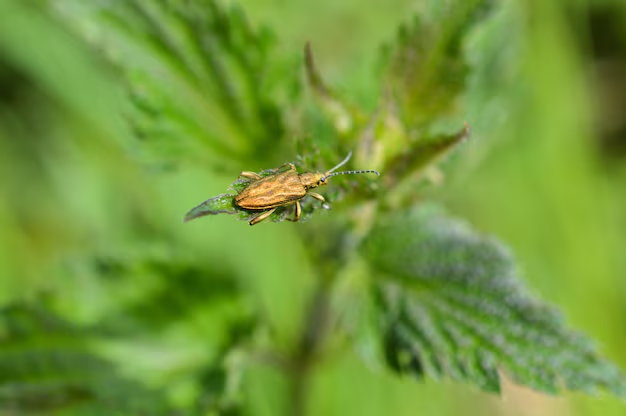Understanding Lyme Disease: What You Need to Know About How It’s Contracted
Lyme disease can seem like an elusive health concern, quietly making its way into everyday lives, especially for those who love spending time outdoors. It’s a phrase that often comes up in health discussions, yet not everyone fully understands how it occurs and why it’s important to pay attention. If you’ve ever wondered how Lyme disease is contracted, this guide is here to provide you with clear, comprehensive insights into its transmission, the risk factors, and practical ways to protect yourself.
What is Lyme Disease?
Lyme disease is an infectious illness caused by the bacterium Borrelia burgdorferi. The disease is primarily transmitted to humans through the bite of infected black-legged ticks, often known as deer ticks. Ticks contract the bacteria by feeding on infected mice, squirrels, or other small animals. Once infected, they become carriers and can transmit the bacteria to humans.
The Life Cycle of a Tick
Understanding the life cycle of a tick provides valuable context to how Lyme disease is spread. Ticks go through four life stages: egg, larva, nymph, and adult. It’s during the nymph stage, when ticks are small and harder to detect, that they are most involved in the transmission of Lyme disease to humans. The nymphs often feed during the spring and summer months, aligning with peak outdoor activity times.
How Do You Get Lyme Disease?
The primary way Lyme disease is transmitted to humans is through tick bites. Here’s a closer look at the process:
Tick Attachment and Transmission
The Bite: Ticks often cling to grasses and low shrubs, waiting for a suitable host to pass by. When your skin brushes against the foliage, they latch on.
Finding a Spot: Once a tick is on a host, it often crawls to warm, moist areas like armpits, groin, and scalp before biting.
Feeding and Transmission: Ticks can transmit Lyme disease only after they’ve been attached and feeding for about 24-48 hours. This is why early detection and removal of ticks is critical.
Symptoms of Lyme Disease
After a tick bite, symptoms of Lyme disease may vary. Common signs include:
- Erythema migrans (EM) rash: Often resembles a bullseye; it’s a clear indicator but doesn’t appear in all cases.
- Flu-like symptoms: Fever, chills, fatigue, body aches, and headaches.
- Joint pain: Particularly in the knees and other large joints.
- Neurological issues: If untreated, neurological problems such as meningitis, temporary facial paralysis, and numbness or weakness in your limbs can occur.
Who is at Risk?
Certain factors increase the risk of contracting Lyme disease, including:
- Geographic Location: Lyme disease is most prevalent in the northeastern, north-central, and Pacific coastal regions of the United States.
- Time of Year: Late spring and summer see higher tick activity, correlating with the peak times for transmission.
- Outdoor Activities: Hiking, camping, and other outdoor activities increase exposure to tick habitats.
- Pet Owners: Pets can carry ticks into homes, inadvertently increasing the risk of bites to humans.
Prevention Strategies
Preventing Lyme disease begins with protecting yourself from tick bites. Here’s how you can lower your risk:
Personal Protection
- Dress Wisely: Wear long sleeves, pants, and closed-toe shoes. Light-colored clothing makes ticks easier to spot.
- Use Repellents: Apply insect repellent with at least 20% DEET to exposed skin and insecticide like permethrin to clothes.
- Perform Tick Checks: Inspect your body, clothing, and gear for ticks after outdoor activities. Don’t forget hidden areas like the scalp and behind the knees.
Environmental Precautions
- Manage Yard Areas: Keep grass cut short and trim overgrown vegetation. Create a tick-safe zone by placing wood chips or gravel between lawns and wooded areas.
- Avoid Tick Habitats: Steer clear of bushy, wooded, or leaf-strewn areas when possible.
Understanding Tick Removal
Even with precautions, a tick bite can happen. Here's how to safely remove a tick:
- Use Fine-tipped Tweezers: Grasp the tick as close to the skin as possible.
- Pull Upwards Steadily: Apply firm, even pressure without twisting or jerking.
- Clean the Bite Area: Wash with soap and water, or use rubbing alcohol.
- Monitor for Symptoms: Over the following weeks, watch for signs of Lyme disease. If symptoms arise, consult a healthcare provider.
Navigating the Myths of Lyme Disease
There are many misconceptions about Lyme disease. Here are a few myths debunked:
Myth 1: All ticks carry Lyme disease.
Reality: Not every tick is a Lyme disease carrier. Only those infected with Borrelia burgdorferi can transmit the bacteria.Myth 2: Lyme disease always shows a bullseye rash.
Reality: The rash occurs in 70-80% of cases but isn’t universal.Myth 3: You can only get Lyme disease in the summer.
Reality: While more common in warmer months, ticks can be active any time temperatures are above freezing.
In Search of a Solution
Efforts to reduce the impact of Lyme disease are ongoing, involving research into vaccines, better diagnostic tools, and more effective public education campaigns. Community awareness and prevention strategies remain key in minimizing risk.
Conclusion: A Path Forward
Lyme disease, while concerning, can be managed with vigilance and informed precautions. By understanding how Lyme disease is contracted and adopting preventive measures, you can enjoy the great outdoors safely. Stay proactive, and should you suspect a tick bite, act promptly. Knowledge truly is the best form of defense in the fight against Lyme disease.
Quick Tips & Takeaways 📝
- Dress Smartly 👕: Long sleeves and pants protect even in warm weather.
- Be Tick-savvy 🐜: Perform regular checks after time outdoors.
- Landscape Maintenance 🌿: Keep your home environment tick-free.
- Repellent Use ⚡: Apply products with DEET or permethrin.
- Know the Symptoms 🚦: Early detection can make all the difference.
- Act Promptly ⏲️: Remove ticks quickly and carefully.
Stay informed, stay protected, and relish the joys of nature responsibly. 🌳👟
